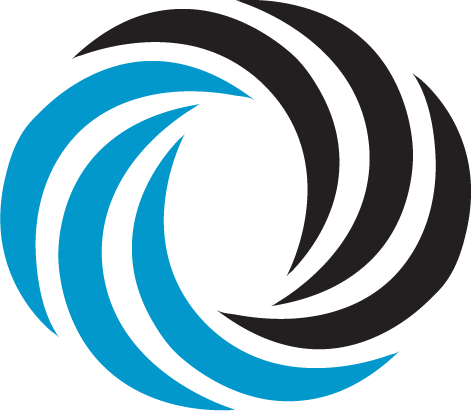
High-Level Synthesis with Vitis 2022.2

Technically Speaking International, INC
High-Level Synthesis with Vitis 2022.2
Description

This course provides a thorough introduction to the Vitis™ High-Level Synthesis (HLS) tool.
The focus of this course is on:
- Converting C/C++ designs into RTL implementations
Learning the Vitis HLS tool flow
- Creating I/O interfaces for designs by using the Vitis HLS tool
Applying different optimization techniques
- Improving throughput, area, latency, and logic by using different HLS pragmas/directives
Exporting IP that can be used with the Vivado® IP catalog
- Downloading for in-circuit validation
What's New for 2022.1
- Optimizing for Throughput module: Added details on automatic array partitioning and using performance constraints to simplify loop-level pragma insertion
All labs have been updated to the latest software versions
|
Level – DSP 3 Course Details
11 labs
Price – $,1800 USD or 18 Xilinx TCs (XPA Training Credits) Course Part Number – DSP-HLS Who Should Attend? – Software and hardware engineers looking to utilize high-level synthesis Prerequisites
Basic RTL design flow knowledge Software Tools
Vivado Design Suite 2022.2
Hardware
Demo board: Zynq UltraScale+ MPSoC ZCU104 board* |
* This course focuses on the Zynq UltraScale+ MPSoC architecture. Check with your local Authorized Training Provider for the specifics of the in-class lab board or other customizations.
After completing this comprehensive training, you will have the necessary skills to:
- Enhance productivity using the Vitis HLS tool
Describe the high-level synthesis flow
- Use the Vitis HLS tool for a first project
Identify the importance of the test bench
- Use directives to improve performance and area and select RTL interfaces
Identify common coding pitfalls as well as methods for improving code for RTL/hardware
- Perform system-level integration of IP generated by the Vitis HLS tool
Course Outline
Day 1
- Introduction to High-Level Synthesis
Overview of high-level synthesis (HLS), the Vitis HLS tool flow, and the verification advantage. {Lecture}
- Vitis HLS Tool Flow
Explores the basics of high-level synthesis and the Vitis HLS tool. {Lecture, Demo, Lab}
- Design Exploration with Directives
Explores different optimization techniques that can improve the design performance. {Lecture}
- Vitis HLS Tool Command Line Interface
Describes the Vitis HLS tool flow in command prompt mode. {Lecture, Lab}
- Introduction to Vitis HLS Design Methodology
Introduces the methodology guidelines covered in this course and the HLS Design Methodology steps. {Lecture}
- Introduction to I/O Interfaces
Explains interfaces such as the block-level and port-level protocols abstracted by the Vitis HLS tool from the C design. {Lecture}
- Block-Level Protocols
Explains the different types of block-level protocols abstracted by the Vitis HLS tool. {Lecture, Lab}
- Port-Level I/O Protocols
Describes the port-level interface protocols abstracted by the Vitis HLS tool from the C design. {Lecture, Demo, Lab}
- AXI Adapter Interface Protocols
Explains the different AXI interfaces (such as AXI4-Master, AXI4-Lite (Slave), and AXI4-Stream) supported by the Vitis HLS tool. {Lecture, Demo}
- Port-Level I/O Protocols: Memory Interfaces
Describes the memory interface port-level protocols (such as block RAM and FIFO) abstracted by the Vitis HLS tool from the C design. {Lecture, Lab}
- Pipeline for Performance: PIPELINE
Describes the PIPELINE directive for improving the throughput of a design. {Lecture, Lab}
Day 2
- Pipeline for Performance: DATAFLOW
Describes the DATAFLOW directive for improving the throughput of a design by pipelining the functions to execute as soon as possible. {Lecture, Lab}
- Optimizing for Throughput
Identify the performance limitations caused by arrays in your design. You will also explore optimization techniques to handle arrays for improving performance. {Lecture, Demo, Lab}
- Optimizing for Latency: Default Behavior
Describes the default behavior of the Vitis HLS tool on latency and throughput. {Lecture}
- Optimizing for Latency: Reducing Latency
Describes how to optimize the C design to improve latency. {Lecture}
- Optimizing for Area and Logic
Describes different methods for improving resource utilization and explains how some of the directives have impact on the area utilization. {Lecture, Lab}
- Migrating to the Vitis HLS Tool
Reviews key considerations when moving from the Vivado HLS tool to the Vitis HLS tool. {Lecture}
- HLS Design Flow – System Integration
Describes the traditional RTL flow versus the Vitis HLS tool design flow. {Lecture, Lab}
- Vitis HLS Tool C++ Libraries: Arbitrary Precision
Describes Vitis HLS tool support for the C/C++ languages as well as arbitrary precision data types. {Lecture, Lab}
- Hardware Modeling
Describes hardware modeling with streaming data types and shift register implementation using the ap_shift_reg class. {Lecture}
- Using Pointers in the Vitis HLS Tool
Explains the use of pointers in the design and workarounds for some of the limitations. {Lecture}
